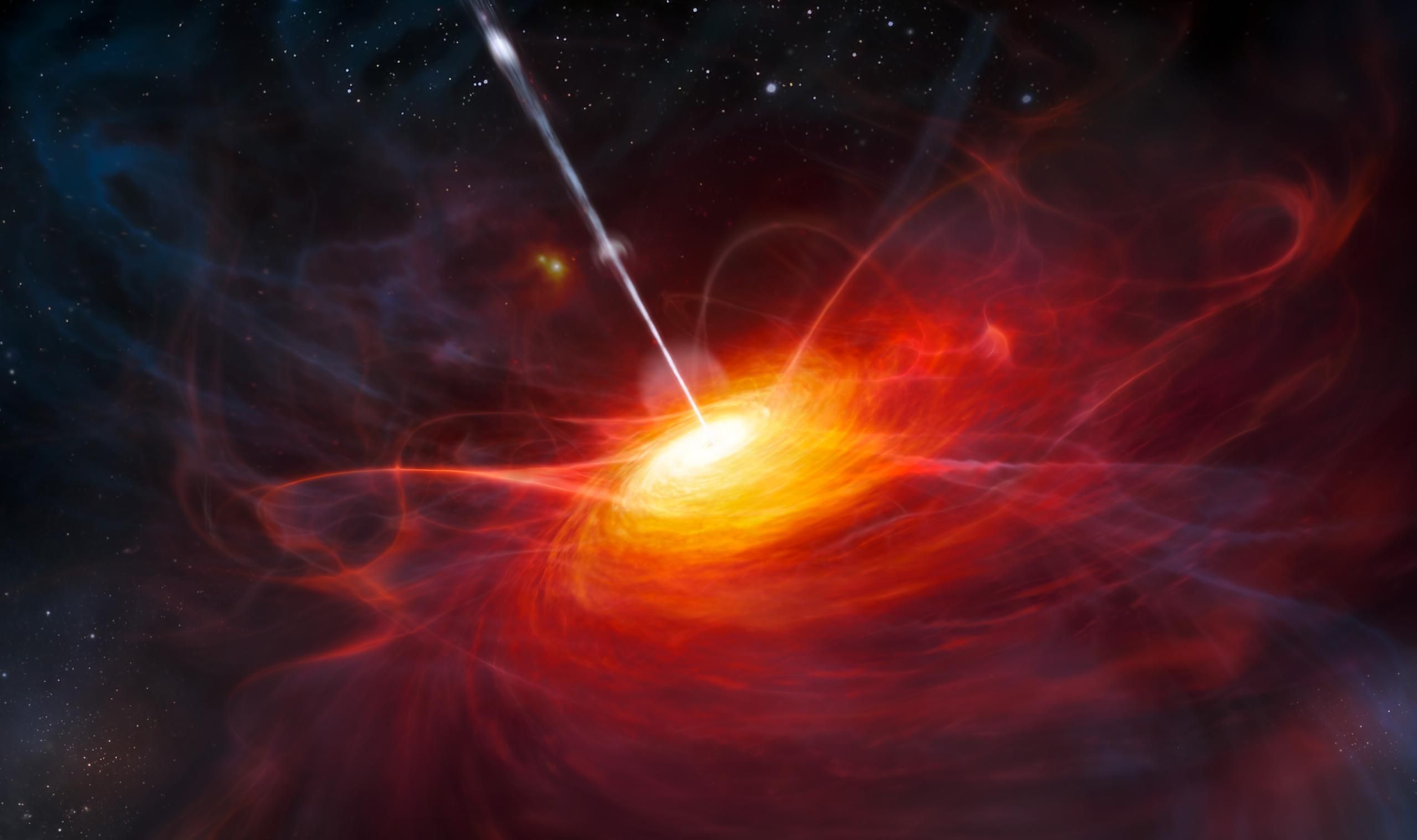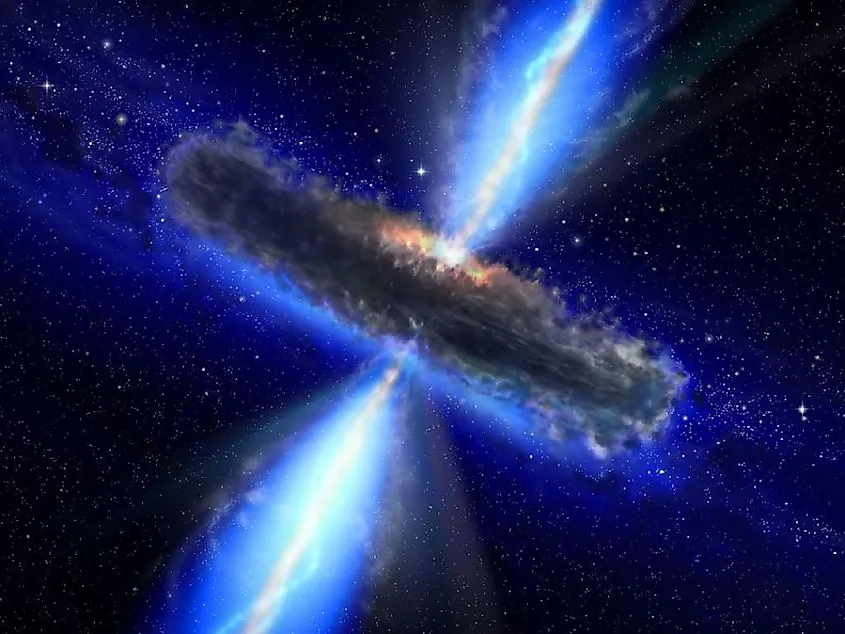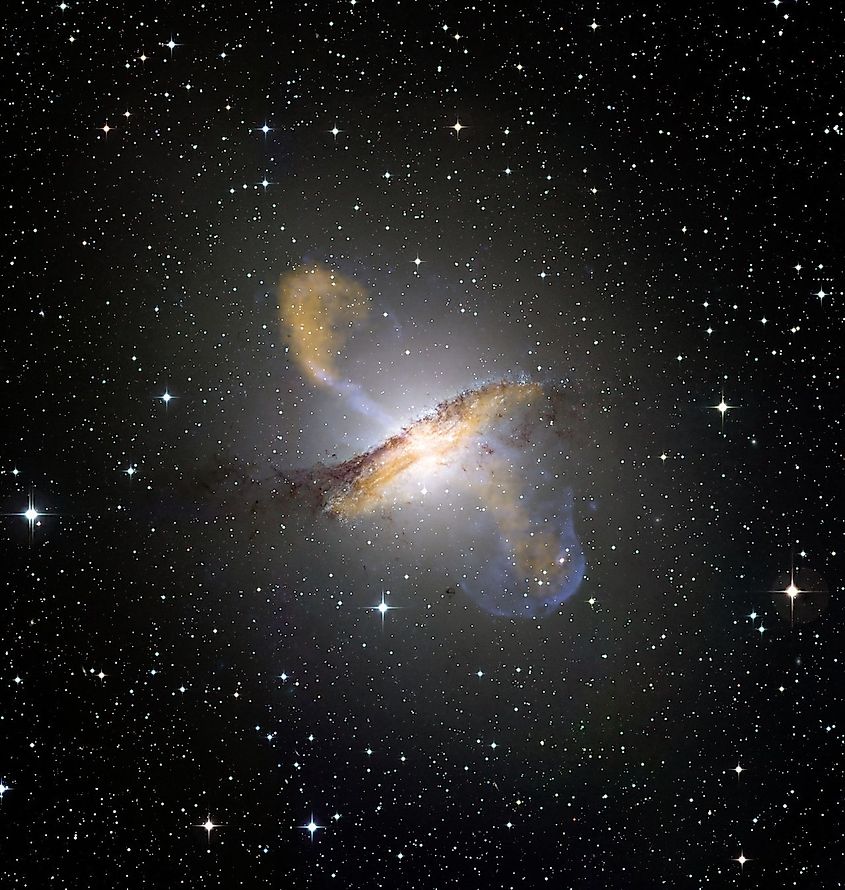
What Are The Brightest Objects In The Universe?
Most of the light in the universe comes from the stars. Without starlight, the universe would be dark and cold, and life itself could never form. Stars can be immensely bright, with some being many thousands of times brighter than the sun. However, in comparison to some objects, the stars themselves appear dim. The brightest known objects in the universe are called quasars, and they can be up to 100,000 times brighter than the entirety of the Milky Way galaxy. What are quasars and how are they produced?
What Is A Quasar?

A quasar is composed of two beams of energy that move outwards in opposite directions. Quasars were first observed in the 1950s and were originally believed to be distant stars. It wasn’t until the launch of the Hubble Space Telescope in the mid-1990s that the true nature of quasars was revealed. Since quasars are so bright, they appear as singular objects when seen with smaller, Earth-based telescopes. From a distance, quasars look indistinguishable from regular stars. In fact, the term quasar means quasi-stellar object, as astronomers originally believed they were stars. Hubble was the first telescope capable of taking high resolution images of quasars, revealing that they were not stars, but were in fact something else entirely.
Hubble discovered that every quasar in the universe originates within the cores of massive, far away galaxies. Earlier telescopes were unable to see that quasars came from galaxies due to the fact that quasars vastly outshine their home galaxy. The center of most massive galaxies in the universe are also home to supermassive black holes, and so it became apparent that quasars must be related to supermassive black holes in some way. An interesting observation of quasars is the fact that they generally only form in the farthest galaxies. The further away an object is, the further back in time we can see as it takes time for light to reach us. Not only are quasars more common in the furthest galaxies, they are also more common in the early universe. There are no known quasars in any of the closest galaxies to the Milky Way. In fact, the nearest quasar is over 600 million light years away. Meanwhile, the furthest quasars are over 13 billion light years away, meaning they formed less than a billion years after the Big Bang.
How Do Quasars Form?

Any explanation for how quasars form needs to explain why they are emitted from the cores of massive galaxies galaxies and why they generally only exist in the early universe. The current model of quasar formation is that they form directly from supermassive black holes. Surrounding every supermassive black in any given galaxy is a vast disk of material called an accretion disk. The accretion disk orbits the supermassive black hole, with material gradually falling into the black hole over time. What happens if there is a gigantic influx of material into the black hole? If vast amounts of material fall into a supermassive black hole too quickly, the material will generate a tremendous amount of friction, heating up the accretion disk. Once the amount of energy in the accretion disk becomes high enough, the energy blasts outwards as two gigantic beams of light, forming a quasar.
Why do quasars generally only appear in the furthest galaxies? As it turns out, quasars are usually produced during the early stages of a galaxy’s formation. As a galaxy forms, it draws in a tremendous amount of surrounding material. A vast amount of that material inevitably finds its way to the supermassive black hole at a galaxy’s center, which in turn leads to the process that causes the formation of a quasar. As a galaxy forms, it is far more active, and more material falls into the supermassive black hole. As a galaxy ages, the supermassive black hole will absorb most of the excess material around it, and the quasar will cease to exist. Every galaxy, including our Milky Way, has likely undergone this process in the past. It is also possible for a galaxy to become active again if it happens to collide with another large galaxy. When two or more galaxies collide, there is a gigantic influx of material that falls into the accretion disk around a supermassive black hole. Smaller quasars can be produced during a galactic collision.











